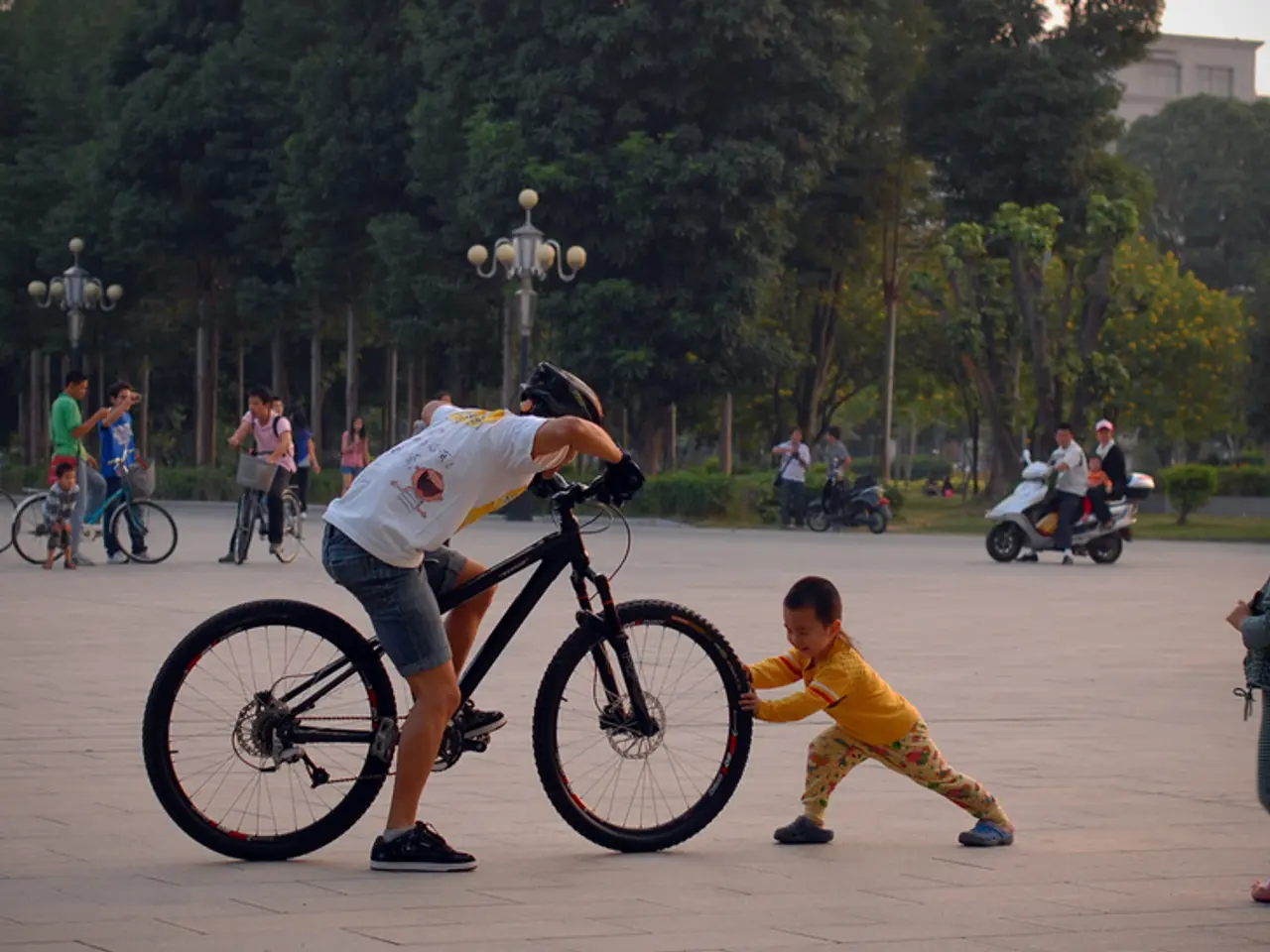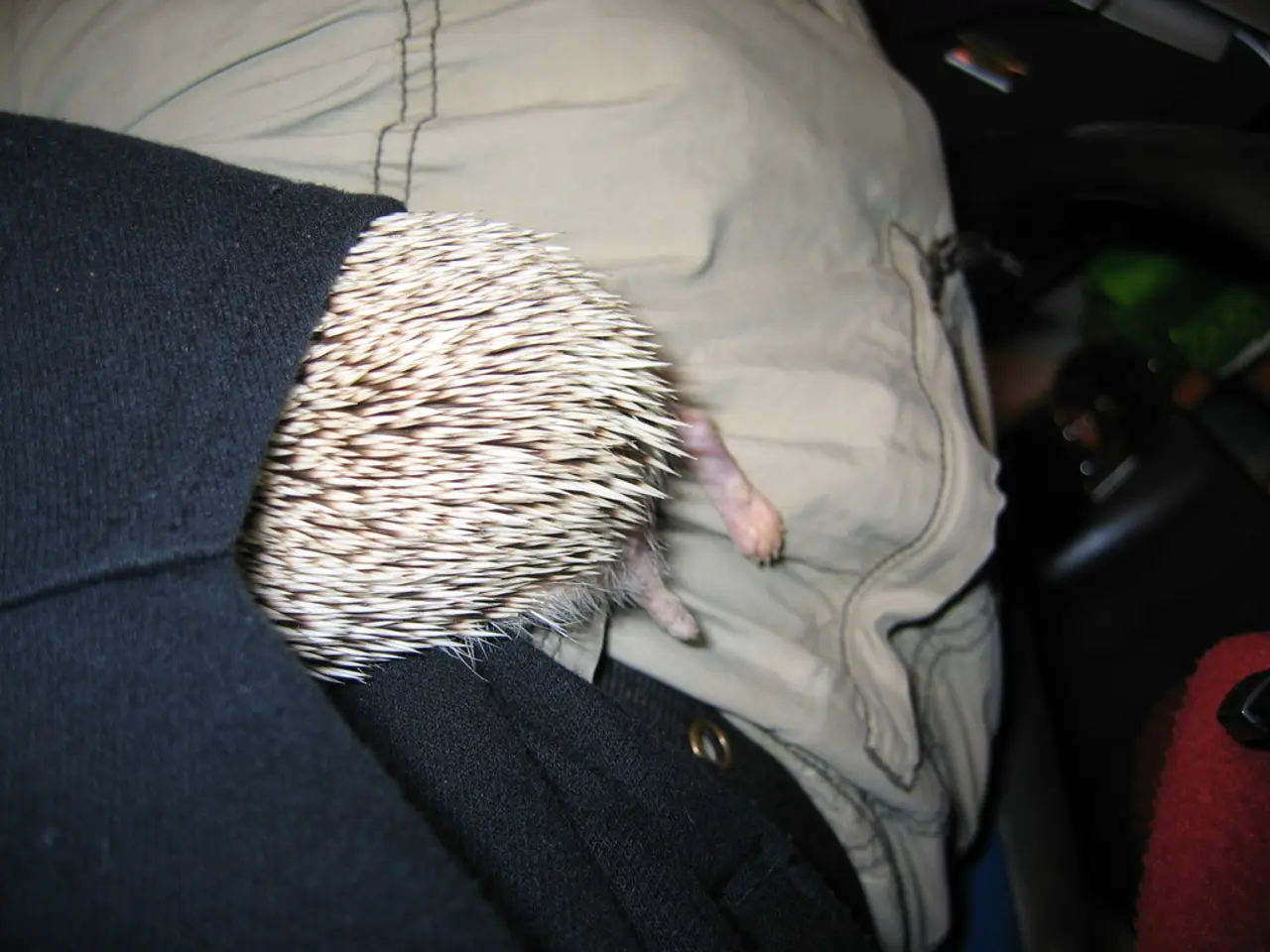Guide a child to cycle without training wheels in nine easy steps:
**Teaching a Child to Ride a Bike Without Stabilizers: A Step-by-Step Guide**
For many children, learning to ride a bike without stabilizers is a significant milestone. Here's a nine-step guide to help you teach your child this valuable skill.
1. **Choose the Right Bike and Safety Gear**: Ensure the bike fits your child well, with feet touching the ground when sitting. Equip them with a properly fitting helmet and protective pads.
2. **Find a Safe, Open, and Flat Area**: Choose a smooth, level surface, such as an empty parking lot or quiet park path, for minimizing risks and distractions.
3. **Start with Balance Practice**: Remove the pedals temporarily or use a balance bike, a bike without pedals, to help your child focus on balancing by scooting along with their feet. During this initial scooting phase, instruct your child on using the brakes.
4. **Teach Braking and Steering**: Show your child how to use the brakes gently and steer effectively.
5. **Introduce Pedaling Slowly**: Reattach the pedals and help your child start pedaling, possibly by holding the bike for stability at first. Have the child do a little 'wiggle' with the brakes on to ensure they feel secure.
6. **Use Supportive Hands-On Help**: Hold the bike or the child's back lightly as they practice pedaling and balancing simultaneously, gradually reducing the support.
7. **Encourage Looking Forward**: Teach your child to look ahead, not down at their feet, to maintain balance and awareness. Hold the child while they put their feet on the pedals and check they are ready, then encourage them to look up, let go of the brakes, and pedal. Walk forwards and slowly release your grip.
8. **Practice Starting and Stopping**: Help your child learn to start pedaling from a standstill and how to stop safely with brakes. Do the 'wiggle' (with brakes on), hold the child, get them to put both feet on the pedals, encourage them to look up, count down from three, and encourage them to let go of the brakes and pedal forwards. Let go after a few steps, then step back to exaggerate the distance they have travelled.
9. **Build Confidence with Independent Riding**: Give encouragement and space for your child to ride on their own, staying close for safety but letting go when ready. Reduce contact with the child by gripping their clothes with one hand and holding the bike handlebars with the other, repeat steps as before, releasing them after only a few steps and letting them ride for as long as they wish.
This stepwise approach is designed to build confidence, balance, and control progressively, making the transition to riding without training wheels safe and enjoyable for your child. Variations like the "sheet trick," where a sheet is used to gently hold and steady the child while they learn balance, can also be effective.
Remember to wipe the cycle down after a muddy ride and check tyre pressure regularly to allow your child a sense of care and ownership of their bike. Sign up to get your guide to the best traffic-free routes near you for a smooth and enjoyable cycling experience.
Engage in outdoor-living and home-and-garden activities by considering a bike ride as part of your lifestyle. Riding a bike can offer traffic-free routes for a peaceful and serene experience, perfect for the entire family to enjoy together.




